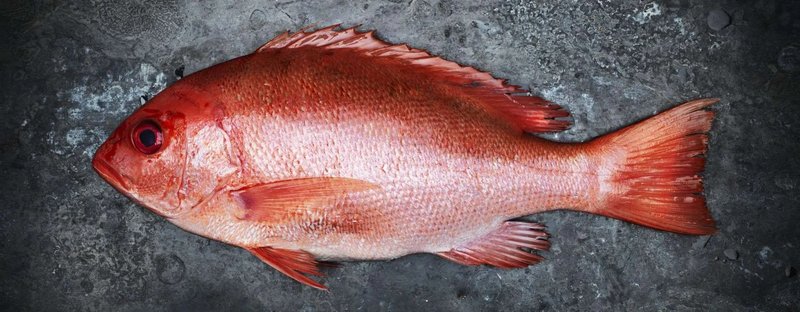
Snapper species, particularly the red snapper, are found in warm waters around the globe. They’re not just pretty faces; their diet reflects their adaptability and hunting prowess. Understanding what and how these fish eat can give us insight into their role in the marine food web as well as tips for fishing enthusiasts looking to catch them. So, grab a coffee and let’s dive into the fascinating world of snapper feeding habits!
Overview of Snapper Species
There are over 100 species of snapper, but the red snapper is perhaps the most famous. Found in the Atlantic and from the Gulf of Mexico down to Brazil, it’s a favorite among fishermen and chefs alike. Other notable species include the mangrove snapper and the yellowtail snapper, each with their unique habitats and preferences.
Snapper often inhabit reefs, rocky areas, and even mud bottoms, giving them plenty of places to hide and hunt. They are social fish and can often be spotted swimming in groups, but they also have individual personalities. Here’s a fun thought: if you think of the ocean as a big dining hall, snapper are the discerning diners, choosing to sit where the best food is served.
What Do Snappers Eat?
Snappers are primarily carnivorous, which means they love to feast on other marine life. Think of them as the ocean’s predators, ready to munch on a variety of tasty treats. Their diet includes:
- Fish: Small fish like sardines and anchovies make up a significant part of their meals.
- Crustaceans: They enjoy crabs and shrimp, which they hunt down with precision.
- Mollusks: Snappers also snack on mollusks like clams and octopus, showcasing their diverse palate.
Honestly, watching a snapper hunt is like seeing a finely-tuned athlete in action. They have sharp eyesight, allowing them to spot prey from a distance, and their swift movements help them catch their meals before they even know what hit them!
How Do Snappers Hunt?
Snapper are strategic hunters. They often employ a sit-and-wait approach, blending into their surroundings until the perfect opportunity arises. Imagine a skilled hunter waiting patiently in a blind, only to spring into action when their target comes close.
Here’s the thing: snapper have powerful jaws filled with sharp teeth, allowing them to capture and hold onto slippery prey. They’re opportunistic eaters, meaning they’ll take advantage of whatever is available.
During the day, they tend to hunt near the ocean floor, while at night, they may move higher in the water column to chase after schools of smaller fish. It’s a bit like changing tactics in a game of chess—always adapting to catch their next meal.
The Importance of a Balanced Diet
The snapper’s diet is not just about survival; it’s essential for maintaining their health and supporting their growth. A well-rounded diet helps them develop strong muscles and vibrant colors, which are crucial for attracting mates.
Parental snapper must ensure that their young have access to adequate food sources. Studies have shown that in areas where food is plentiful, snapper populations tend to thrive and reproduce successfully. On the other hand, when food becomes scarce, everything from their growth rates to their ability to reproduce can take a hit.
It’s similar to our own diets; without the right balance of nutrients, we wouldn’t feel our best. Fish need that same care, even if they experience it in a very different world.
Feeding Habits During Different Life Stages
Baby snapper start their lives with a different menu than adults. Juvenile snappers typically feed on smaller plankton, tiny crustaceans, and small fish. This diet is crucial for their early growth as they transition to a more significant predatory diet as they mature.
As they grow, their hunting skills and preferences evolve. Adult snappers, being larger and more experienced, can tackle bigger prey and are often more aggressive hunters. The shift in diet from small plankton to larger fish and crustaceans reflects their increase in size and hunting prowess, much like how children develop their taste in food as they grow.
Here’s a little analogy: think of baby snappers as toddlers exploring their first tastes, while adult snappers are like seasoned foodies, confidently diving into a wide variety of gourmet options!
Environmental Impacts on Snapper Diet
The marine environment plays a crucial role in the snapper’s diet. Changes in water temperature, pollution, and overfishing can all impact the availability of their food sources. For example, when water temperatures rise, certain fish and crustaceans may move to cooler waters, making it harder for snappers to find meals.
Overfishing can also lead to a decline in prey species, which in turn can affect snapper populations. A decrease in food can stress these fish, affecting their health and reproductive success. In a way, it’s like a ripple effect; changes in one part of the ecosystem can lead to larger consequences throughout the food web.
That is why responsible fishing practices and conservation efforts are so important—ensuring that snapper have a healthy environment to thrive.
The captivating world of snapper feeding habits reveals much more than just what these fish eat. Their diet, hunting strategies, and adaptability highlight their role in the marine ecosystem. By understanding what snappers need to thrive, we can appreciate the delicate balance of ocean life and the importance of preserving it.
So, the next time you enjoy a delicious snapper dish or spot one while diving, remember the journey it took to get there—its adventures in finding food, adapting to its environment, and contributing to the ocean’s rich tapestry. Whether you’re a chef, a fisherman, or simply an ocean enthusiast, knowing about the diet and feeding habits of the snapper makes every encounter just a bit more special.
